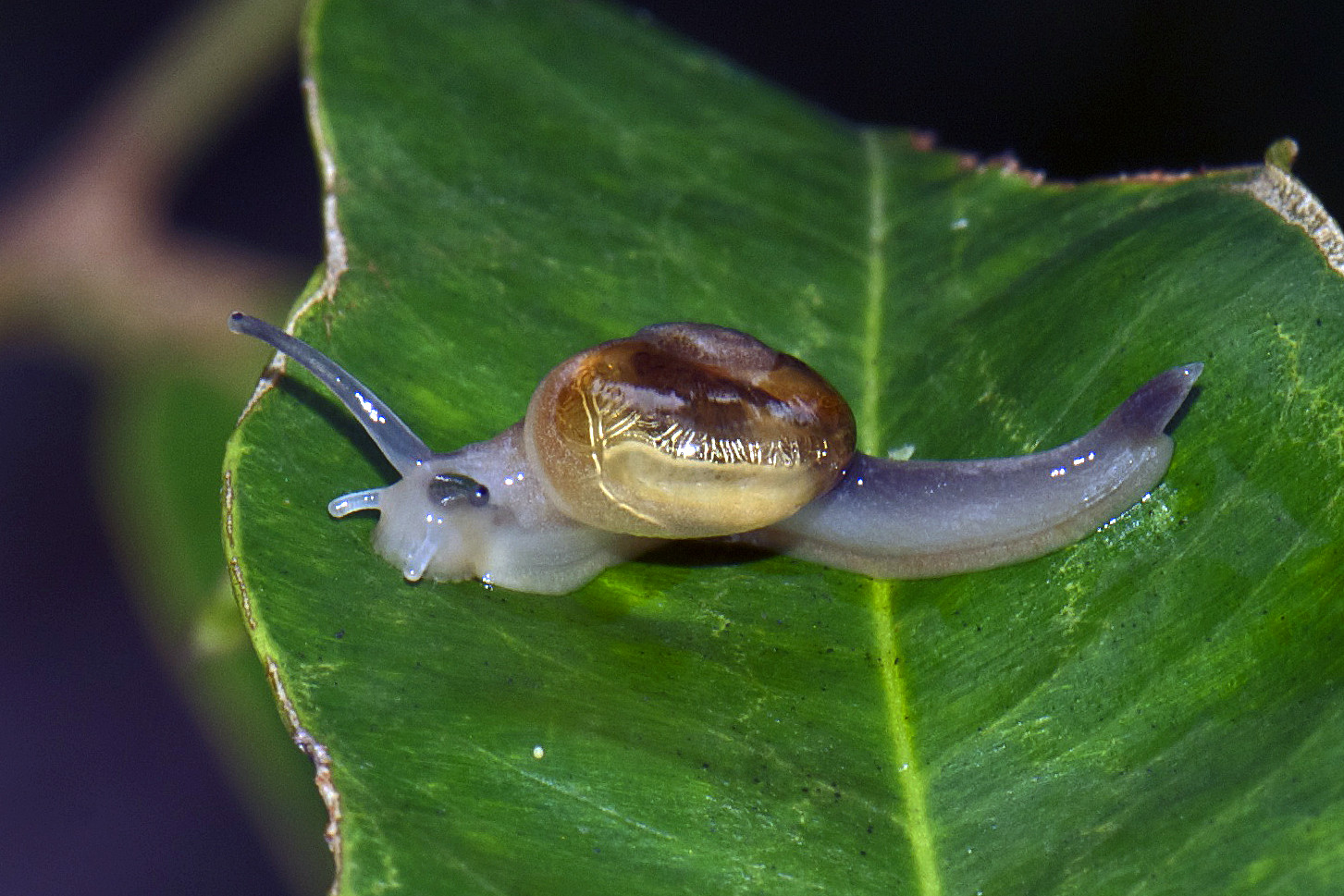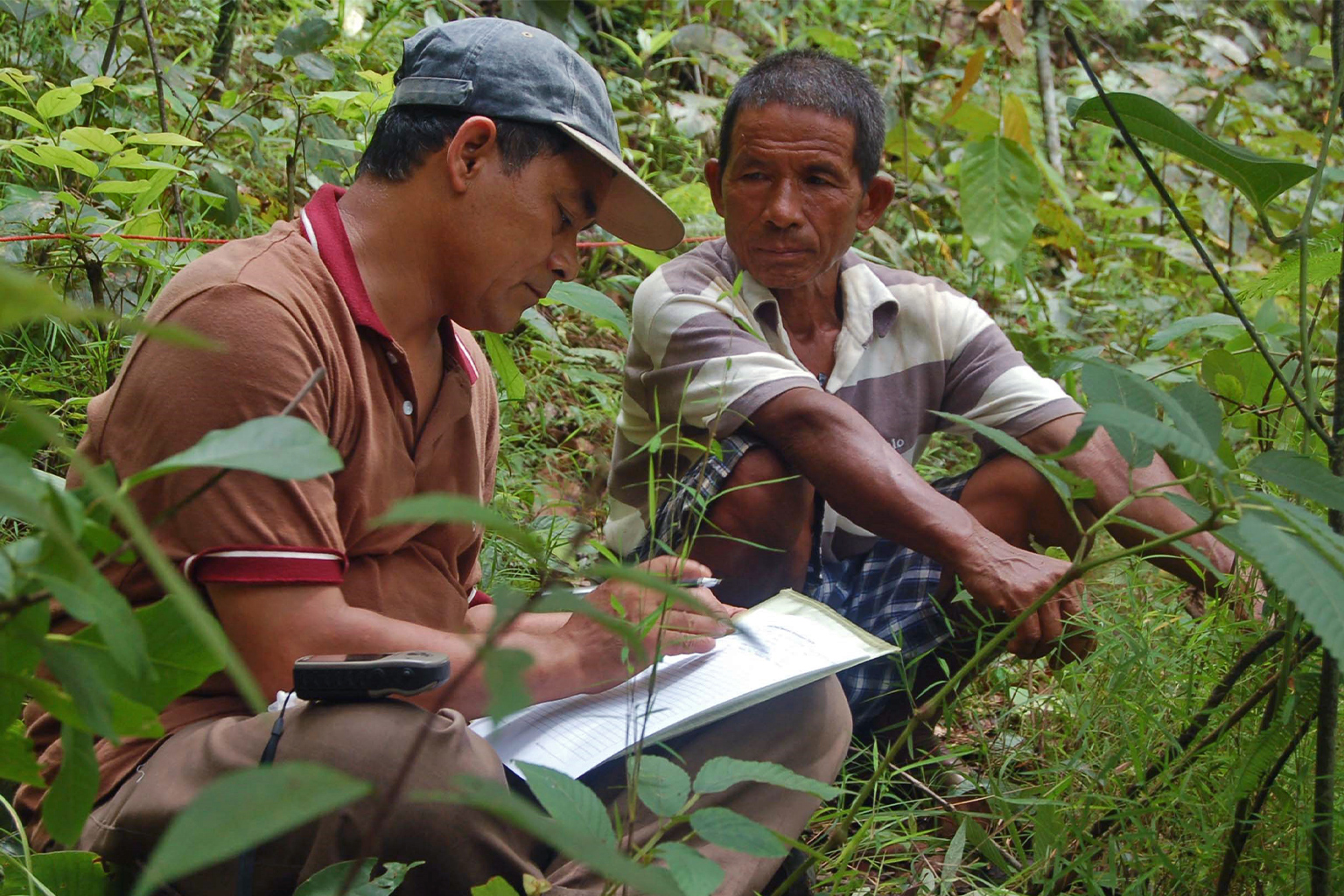- Prem Bahadur Budha is Nepal’s leading malacologist, having described 18 new-to-science species of mollusks, mostly land snails, from his homeland.
- A newly published paper honors his achievements by naming a newly described snail species, also from Nepal, after him: Endothyrella prembudhai.
- In an interview with Mongabay, Budha recounts his struggle to break into the rarefied field of malacology, the threats facing Nepal’s mollusks, and the massive potential for more new species descriptions from the Himalayan country.
KATHMANDU — Dashain, in Nepali Hinduism, commemorates the victory of the goddess Durga over the demon Mahishasura. It’s a multiday holiday in the Himalayan country, the biggest one of the year, and this year fell in early October. For Prem Bahadur Budha, Dashain this year also brought with it a special gift to honor his contribution to the study of mollusks in the country.
“This year’s Dashain gift for me: Endothyrella prembudhai, the new species of land snail described by renowned and famous mollusc taxonomists Barna Páll-Gergely and Jozef Grego,” he wrote in a Facebook post.
Budha and his team of malacologists have to date described 18 species of mollusks new to science in Nepal. He’s also responsible for publishing the most up-to-date list of land snails found in the country — an achievement noted by Páll-Gergely and Grego in their paper describing the new species, also found in Nepal, in the Journal of Conchology.

Budha, a zoology professor at Tribhuvan University in Kathmandu, says he believes the Himalayas are a treasure trove for mollusks, and estimates that only 5% of the species in the phylum found in Nepal have been described so far. Mongabay’s Abhaya Raj Joshi recently spoke with Budha over the phone about his illustrious career in malacology and the challenges faced by mollusks in Nepal. The following interview has been translated from Nepali and lightly edited for clarity and style.
Mongabay: Let’s start with how and when you got into the field of malacology.
Prem Bahadur Budha: My personal interest in the field of malacology traces back to the 1990s when I collected shells of different mollusks as a hobby, especially when traveling to eastern Nepal. These were the days after I had completed my master’s degree in zoology. The more my collection grew, the greater my interest in them.
It was around 2003 or 2004 when I decided to pursue malacology as a career. For that, I wrote to leading professors from different universities around the world asking them if they have any opportunity for me to further my interest in the field. A handful of them replied, but most of them said they didn’t have the funds to support me.
However, I received an invitation to participate in taxonomy training in Belgium. The trainers there taught the participants how to write proposals to seek funding for research. I used what I learnt from the program to prepare a proposal to research mollusks in Nepal.

As part of this exercise, I reviewed the existing literature. But to my surprise, I found out that not much had been done in the country so far. By comparison, a lot of work had been done on mollusks in India’s northeast and northwest. The British scientists involved in the studies there during colonial times didn’t come to Nepal for some reason.
I was then invited by Fred Naggs from the Natural History Museum in London for a week to see its collection of mollusks. He told me that he was working on a project, which could possibly be funded by the Darwin Initiative, to develop the expertise of malacologists in South and Southeast Asia. I was glad to know that he considered me a potential collaborator for Nepal. When the project was approved, I worked on my Ph.D. simultaneously and completed it in 2017.
Mongabay: You have already described 18 mollusk species that are new to science. Could you tell us about the first new species you described?
Prem Bahadur Budha: The first new species (in fact there were three of them) my team described was in a study published in 2015. They belong to the genus Endothyrella which comprises air-breathing land snails. We named them Endothyrella angulata, Endothyrella dolakhaensis and Endothyrella nepalica.
When we describe a new species, we first identify its genus, which is in itself a difficult task. We then look at the species under the genus and their global distribution. We compare it with known specimens from other collections, note its shape, size and color, and tally with species that we already know about. Then we ascertain whether an individual belongs to a new species or not. People also use DNA these days to identify the species, but I believe that morphology [physical characteristics] is the first basis for discovery of new species.

Mongabay: Following your fieldwork for your Ph.D. and other subsequent research, you updated the list of mollusks found in Nepal, for which a new mollusk species has now been named after you. Could you tell us about the update?
Prem Bahadur Budha: When I published my literature review in 2005, the list for land mollusks was less than 100. In the 2015 checklist, I presented 138 species. Now the number has reached more than 170. The number of aquatic species, which was limited to a few, has gone up to 80.
Mongabay: Following your success in describing species that are new to science, your students must be very interested to take up malacology. Is that so?
Prem Bahadur Budha: Only a few students are interested in malacology as it requires passion and dedication. In malacology, it takes time for research work to bear fruit and you have to spend a lot of time looking at the morphology. You need the drive to spend hours on the microscope to examine different specimens you collect.
Mongabay: What is the biggest satisfaction you get from your work?
Prem Bahadur Budha: My teacher, Basanta Kumar Thapa, described some new-to-science insect species in Nepal, and I was inspired by him. It is not easy for a Nepali to describe new species, given the [limited] resources and knowledge we have. That’s why only a few of us have done it so far. That’s what keeps me going and motivated. Now that I have a species with my name, it’s also something I’m proud of.

Mongabay: Now let’s move on to the threats that mollusks face in Nepal.
Prem Bahadur Budha: If we look at the species that have gone extinct from Earth so far, around 43% of them are mollusks. This also shows how sensitive these species are to any kind of change. They’re limited to small pockets [of habitat], and when that’s disturbed by factors such as climate change, they go extinct. While urbanization and intensification of agriculture are growing threats, land pollution caused by use of pesticides and fertilizers is also killing them in large numbers. Some species found in waterlogged rice fields have already gone extinct due to use of fertilizers. In some places, poison has been used to kill fish. This also kills a lot of mollusks that play an important role in cleaning freshwater, recycling nutrients, and helping in decomposition.
Building of dams also is a big threat as some mollusks spend their larval stage in the gills of host fish. When the fish can’t move, their life cycle is disrupted.
Mongabay: What about people who eat them?
Prem Bahadur Budha: Yes, for example, the Tharu [an Indigenous group from southern Nepal] eat them as ghongi and ghonga, as per their tradition. However, these days it’s not easy to find and catch them. Even non-Tharu have learnt to eat them, and as more people kill them for food, their populations are declining.

Mongabay: What about efforts to conserve them?
Prem Bahadur Budha: Like other small species, mollusks have also been ignored. The big animals like tigers, rhinos and elephants get all the funding and the attention. But if you look through the biodiversity lens, a mollusk is as important as a tiger.
Mongabay: How many more species do you think you can describe now?
Prem Bahadur Budha: I believe that we have discovered only 5% of the mollusks in Nepal so far. The number should be more than 1,000 as the Himalayan range is a huge habitat for mollusks.
Banner image: Budha looking for snails in Mahendra Cave in 2008. Image courtesy of Prem Bahadur Budha.
Citations:
Páll-Gergely, B., & Grego, J. (2022). A new species of Endothyrella Zilch, 1960 from Nepal (Gastropoda: Stylommatophora: Plectopylidae). Journal of Conchology, 44(4), 343-347.
Budha, P. B., Naggs, F., & Backeljau, T. (2017). Conchological differentiation and genital anatomy of Nepalese Glessulinae (Gastropoda, Stylommatophora, Subulinidae), with descriptions of six new species. ZooKeys, 675, 129-156. doi:10.3897/zookeys.675.13252
Budha, P. B., Naggs, F., & Backeljau, T. (2017). The genus Diplommatina Benson, 1849 (Gastropoda: Caenogastropoda: Diplommatinidae) in Nepal, with the description of seven new species. European Journal of Taxonomy, (337). doi:10.5852/ejt.2017.337
Páll-Gergely, B., Budha, P. B., Naggs, F., Backeljau, T., & Asami, T. (2015). Review of the genus Endothyrella Zilch, 1960 with description of five new species (Gastropoda, pulmonata, Plectopylidae). ZooKeys, 529, 1-70. doi:10.3897/zookeys.529.6139
Feedback: Use this form to send a message to the author of this post. If you want to post a public comment, you can do that at the bottom of the page.
